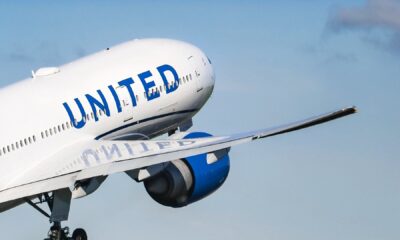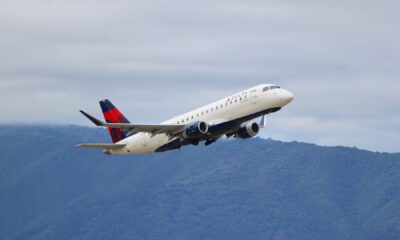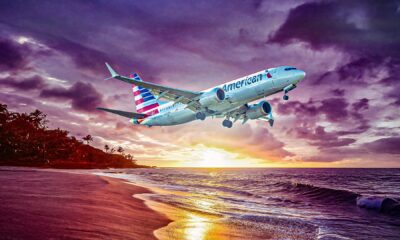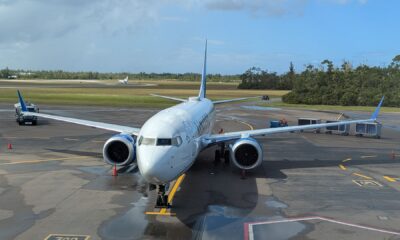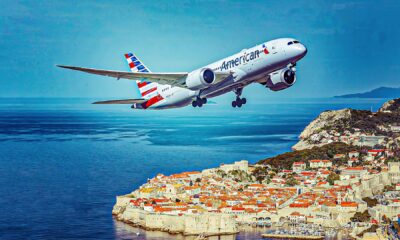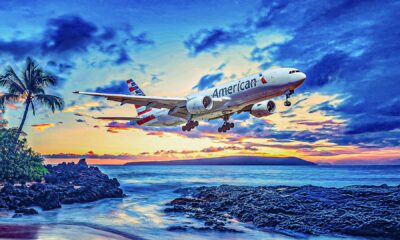World
US Airlines Phase Out International First Class Amid Changing Trends

The landscape of air travel is shifting dramatically as most major US airlines have eliminated or drastically reduced their international first class offerings. This change reflects evolving consumer preferences and economic realities. While first class has historically represented the pinnacle of luxury travel, characterized by lie-flat suites and exquisite dining, the demand within the United States for such exclusivity is diminishing.
The Decline of First Class in the US
Currently, only American Airlines maintains an international first class cabin, branded as “Flagship First,” available exclusively on its Boeing 777-300ER aircraft. This service includes fully lie-flat seats, personalized service, and access to premium lounges. However, even American Airlines plans to phase out this offering in favor of upgraded business class products, indicating a significant trend across the industry.
Most US carriers, including Delta Air Lines and United Airlines, have opted for enhanced business class configurations, which now offer amenities that were once exclusive to first class. These changes arise from a fundamental shift in market demand. According to various industry analyses, the modern business class experience now blurs the lines with first class, providing flat beds, privacy doors, and top-tier service that satisfies many travelers’ expectations without the associated costs.
As the chart below illustrates the economics at play, the average installation cost per first class seat is significantly higher than that of business class seats, while the revenue generated per square foot tends to be lower.
– **Cabin Class**: Average Seats per Row | Revenue per Sq. Ft | Installation Cost per Seat
– **Economy**: 6–10 | High | Low
– **Business Class**: 4–6 | Medium–High | High
– **First Class**: 1–4 | Low–Medium | Very High
The declining profitability of first class is compounded by changing consumer behavior. The majority of premium travelers in the US are corporate clients, who often opt for business class due to its balance of comfort and cost, particularly for shorter flights. This shift has led airlines to prioritize business class over first class, resulting in a more efficient cabin layout.
Economic Factors and Changing Preferences
Several factors contribute to the diminishing appeal of first class among US airlines. A critical consideration is the cost-to-revenue ratio. First class seats are expensive to install and maintain, often resulting in underutilization. Additionally, there is a growing sentiment among consumers, particularly in the wake of economic pressures, to prioritize value over luxury.
The financial strain experienced by the upper middle class has led many travelers to reconsider their spending on premium travel options. As noted by Islands.com, while some international airlines maintain first class for branding purposes, US carriers tend to focus more on profitability.
Interestingly, the wealthiest travelers have increasingly turned to private jets, viewing them as a more viable alternative to first class. This trend has gained momentum during the pandemic, with many affluent individuals opting for private air travel to ensure comfort and privacy.
While some international airlines, such as Emirates and Singapore Airlines, continue to offer first class, their markets differ significantly. These airlines cater to a global clientele, including high-profile individuals and diplomats, making first class a more viable option on certain long-haul routes.
Airline executives and industry experts largely agree that first class does not align with the financial realities of most US carriers today. American Airlines’ decision to maintain its Flagship First service is currently driven by legacy routes and branding strategies, but this too may change as the airline embraces new business class configurations.
As airlines continue to evolve their offerings, the modern business class experience often rivals that of traditional first class. Passengers can enjoy features such as sliding privacy doors, lie-flat beds, gourmet meals, and access to dedicated lounges—attributes that enhance the overall travel experience.
Travelers are advised to carefully review their tickets, as many airlines have rebranded their first class offerings to resemble enhanced business class services. This can lead to confusion for those expecting the opulence associated with traditional first class travel.
In summary, the decline of international first class among US airlines signifies a broader transformation in the aviation industry. The shift reflects changing consumer expectations and economic pressures that prioritize efficiency and comfort over luxury. As airlines adapt to these dynamics, the future of air travel appears to be firmly anchored in an evolved business class that offers a premium experience without the hefty price tag.
Looking ahead, it seems unlikely that first class will make a significant comeback on US carriers. The focus now lies on providing an exceptional business class experience that meets the needs of a diverse range of travelers.
-

 Politics4 weeks ago
Politics4 weeks agoSecwepemc First Nation Seeks Aboriginal Title Over Kamloops Area
-

 World5 months ago
World5 months agoScientists Unearth Ancient Antarctic Ice to Unlock Climate Secrets
-

 Entertainment5 months ago
Entertainment5 months agoTrump and McCormick to Announce $70 Billion Energy Investments
-

 Science5 months ago
Science5 months agoFour Astronauts Return to Earth After International Space Station Mission
-

 Lifestyle5 months ago
Lifestyle5 months agoTransLink Launches Food Truck Program to Boost Revenue in Vancouver
-

 Technology3 months ago
Technology3 months agoApple Notes Enhances Functionality with Markdown Support in macOS 26
-

 Lifestyle3 months ago
Lifestyle3 months agoManitoba’s Burger Champion Shines Again Amid Dining Innovations
-

 Top Stories2 months ago
Top Stories2 months agoUrgent Update: Fatal Crash on Highway 99 Claims Life of Pitt Meadows Man
-

 Politics4 months ago
Politics4 months agoUkrainian Tennis Star Elina Svitolina Faces Death Threats Online
-

 Sports5 months ago
Sports5 months agoSearch Underway for Missing Hunter Amid Hokkaido Bear Emergency
-

 Politics5 months ago
Politics5 months agoCarney Engages First Nations Leaders at Development Law Summit
-

 Technology5 months ago
Technology5 months agoFrosthaven Launches Early Access on July 31, 2025

